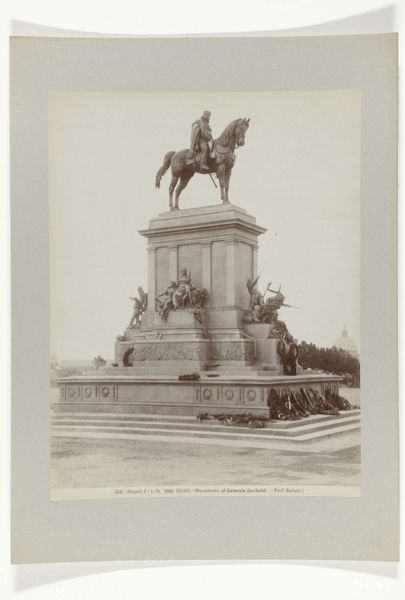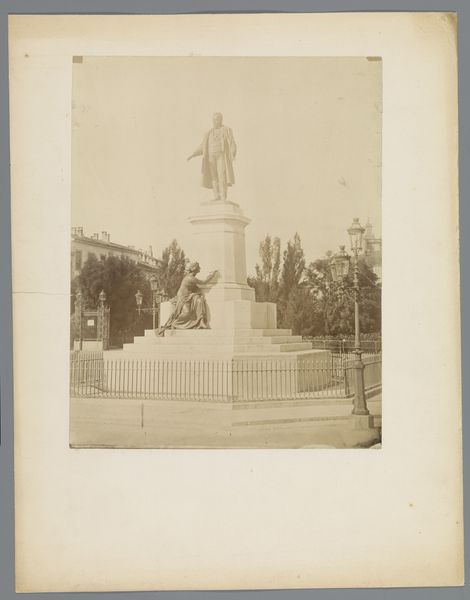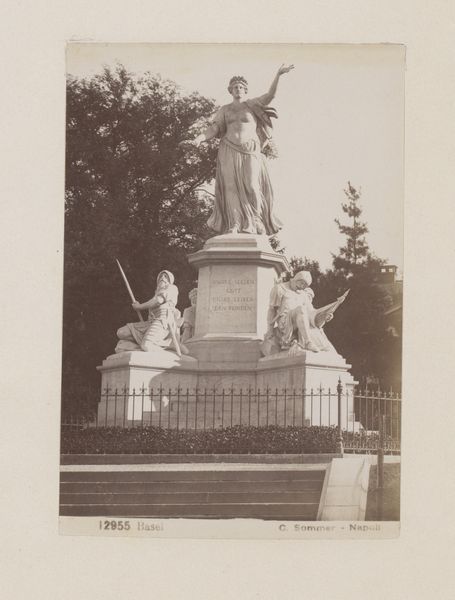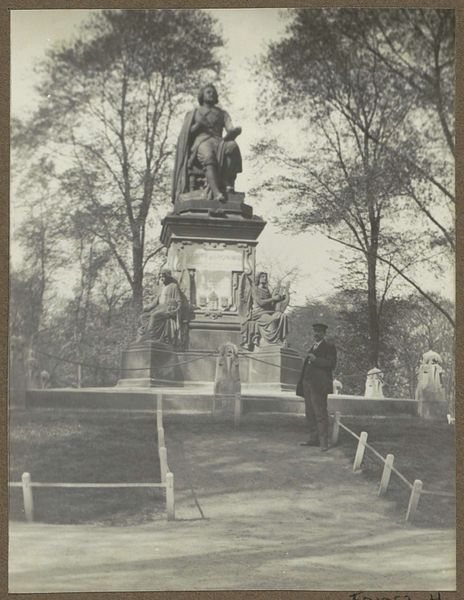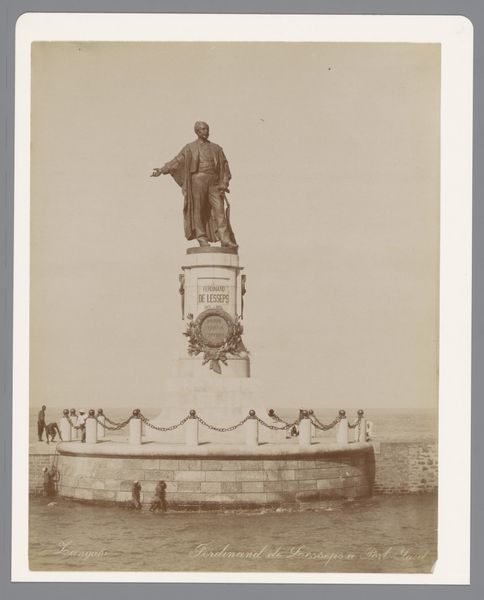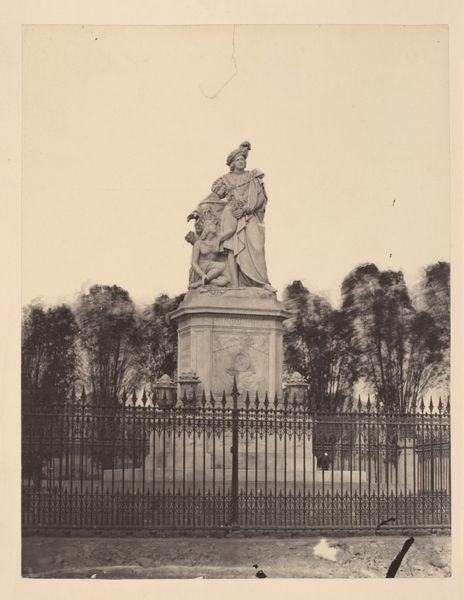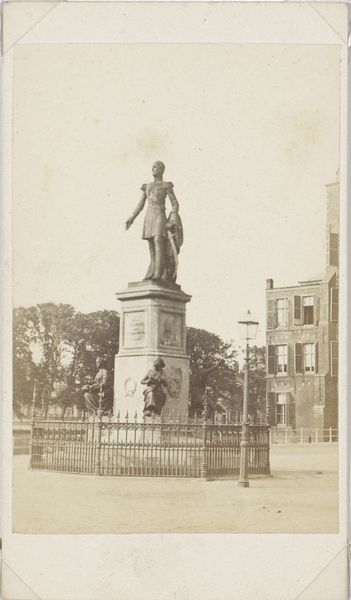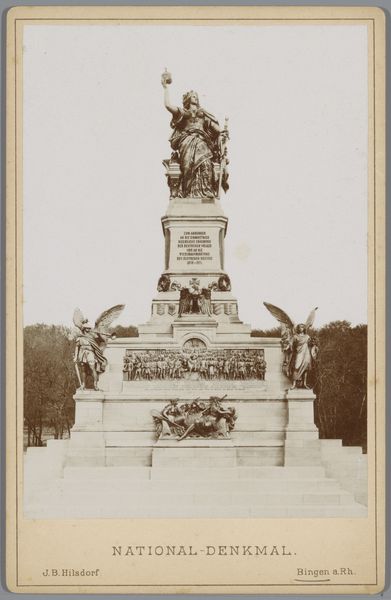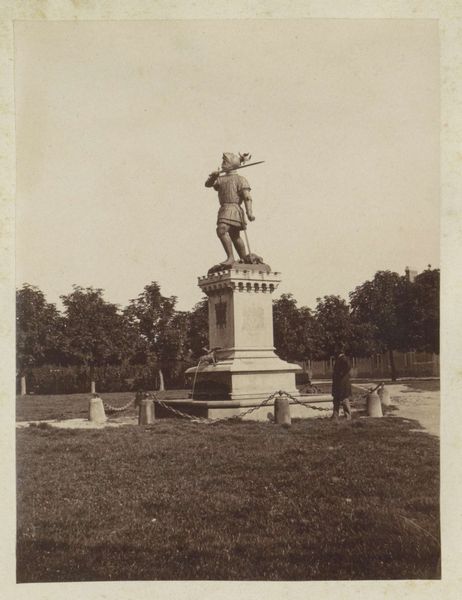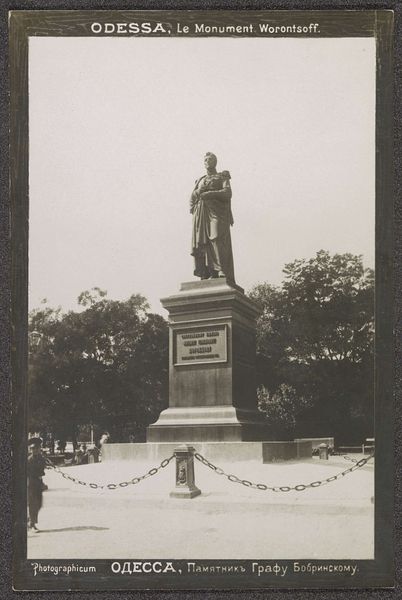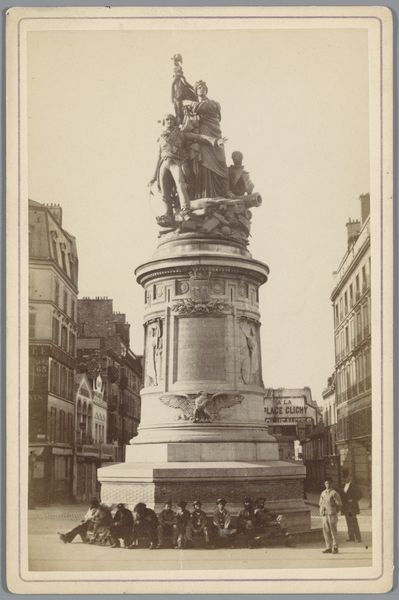
Fotoreproductie van foto van het ruiterstandbeeld van Giuseppe Garibaldi te Rome 1880 - 1905
0:00
0:00
print, photography, sculpture, gelatin-silver-print
#
portrait
# print
#
landscape
#
photography
#
ancient-mediterranean
#
sculpture
#
gelatin-silver-print
#
cityscape
#
history-painting
#
realism
Dimensions: height 126 mm, width 101 mm
Copyright: Rijks Museum: Open Domain
Curator: Here we have an anonymous gelatin-silver print dating from around 1880 to 1905, entitled 'Fotoreproductie van foto van het ruiterstandbeeld van Giuseppe Garibaldi te Rome,' which translates to 'Photographic reproduction of a photo of the equestrian statue of Giuseppe Garibaldi in Rome.' Editor: Well, my immediate impression is dominated by the striking cyanotype tones. It lends a certain ghostly quality to what is clearly intended to be a monument to strength and patriotism. I'm also fascinated by the stark contrast and lack of midtones here. Curator: Absolutely. Garibaldi, a key figure in Italian unification, is immortalized here. The monument itself would have been intended as a powerful symbol of national identity and civic virtue. The use of photography to reproduce it introduces another layer, highlighting its dissemination and role in constructing collective memory. Editor: Indeed, while we perceive an "original" sculpture rendered here as reproductive, let's not neglect how such duplication democratizes images, reaching publics otherwise excluded from artistic encounter. Think of the implications around this choice of materials: gelatin silver rather than, say, a platinum print. What sort of availability are we talking about here, both materially and socially? Curator: The choice of gelatin-silver print is important from a socio-historical perspective, especially because its low cost aided in wide distribution to foster awareness, and build national sentiment in Italy and beyond. But note the inherent tension: this is both a piece of art and a historical document, perpetually mediating past events to a wider, more democratic viewership. Editor: And it’s intriguing to consider this reproducibility against notions of artistic authenticity. Mass production techniques fundamentally alter how people interact with both the original sculpture, and its ensuing representations. Also, it bears emphasizing the contrast between sculpture--often rendered in bronze--and its translation to light-sensitive emulsion. One evokes solidity, posterity; the other... fragility and ephemerality. Curator: Precisely. It speaks to photography’s increasing role in shaping historical narratives and popular perceptions. The original sculpture solidifies Garibaldi's legacy in the physical landscape of Rome. Photography extends that reach exponentially, disseminating the image far beyond geographical limitations. Editor: Ultimately, this photographic reproduction forces us to consider what histories and ideologies we might receive and, by equal measure, what gets obscured within such pictures. The muted tones actually work to underscore how photographs alter our relationship to objects over vast expanses of time.
Comments
No comments
Be the first to comment and join the conversation on the ultimate creative platform.
